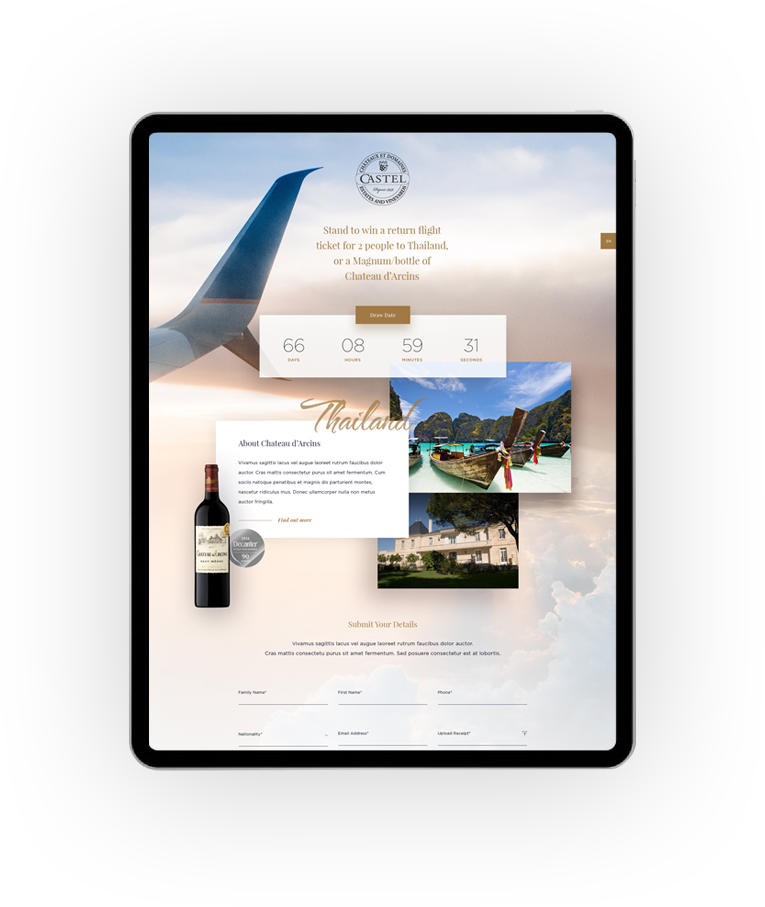User Interface (UI) design stands as a critical linchpin, influencing how users interact with websites and applications. This blog post is a deep dive into the foundational principles that underscore effective UI design, offering insights into best practices that elevate user experiences and create memorable digital interactions.
Key Takeaways
- UI Importance: Explore the pivotal role UI plays in creating user-friendly, visually appealing digital platforms, directly impacting user engagement and satisfaction.
- Practical Insights: Gain actionable insights for implementing UI design principles in web and app development, ensuring the translation of theory into real-world success.
- User-Centric Approach: Understand the significance of prioritizing users’ needs throughout the UI design process, fostering a deeper connection between the user and the digital interface.
- Visual Hierarchy: Learn how visual hierarchy not only directs user attention but also enhances overall usability, contributing to a seamless and intuitive user journey.
- Consistency and Standards: Discover how adhering to design consistency and industry standards not only instills trust but also contributes to a recognizable brand identity.
User Interface (UI) Design
User Interface design is a multifaceted art that involves orchestrating digital environments to seamlessly blend aesthetics with functionality. From the intricate layout to carefully chosen color schemes and interactive components, UI design aims to create interfaces that not only captivate but also guide users through an immersive digital journey. It serves as the initial handshake, setting the tone for user interactions and leaving a lasting impression.
Understanding the intricacies of UI design goes beyond the surface—it’s about creating an intuitive space that not only aligns with a brand’s identity but also fulfills users’ expectations. The challenge lies in crafting designs that not only please the eye but also provide a user experience that is both seamless and enjoyable.
Significance of UI in Digital Platforms
In the expansive digital landscape, where countless websites and applications compete for user attention, UI emerges as the forefront ambassador. A well-crafted UI serves as the initial point of contact, shaping first impressions and determining whether users will engage further. Beyond aesthetics, UI design is the gateway to functionality, and striking a harmonious balance between the two is paramount.
User-Centric Approach in UI Design
The heart of effective UI design lies in a user-centric approach. It involves immersing oneself in the user’s perspective, empathizing with their expectations, and creating interfaces that resonate with their digital journey. Empathy in design is not just a buzzword but a guiding principle that ensures the end product addresses real user needs.
- Empathy in Design: Stepping into the user’s shoes enhances the designer’s ability to create interfaces that genuinely connect with their expectations. It involves understanding the user’s context, challenges, and preferences.
- User Feedback Loop: Establishing a continuous feedback loop with users is not just a post-design formality; it’s a crucial step in refining UI elements based on real-world usage. User feedback provides invaluable insights into what works and what needs improvement.
Visual Hierarchy: Guiding User Attention
Visual hierarchy is a cornerstone principle that governs how users navigate and interact with digital interfaces. By strategically arranging elements based on their importance, designers influence how users perceive and engage with content. The effective use of visual hierarchy is akin to a silent guide, leading users through a logical and intuitive journey.
- Focal Points: Understanding the creation of focal points directs user attention, guiding them through a logical and intuitive journey. Designers strategically place key elements to create focal points that draw users into the interface.
- Hierarchy in Action: Exploring real-world examples demonstrates the effectiveness of visual hierarchy in popular digital platforms. It showcases how a well-designed hierarchy impacts user experience, emphasizing the importance of thoughtful arrangement.
Consistency and Adherence to Standards
Consistency forms the bedrock of a well-designed UI. Adhering to established design standards not only fosters a sense of familiarity for users but also contributes to a professional and trustworthy image for the brand. Consistency goes beyond visual elements; it extends to the overall user experience and the emotional connection users build with the interface.
- Brand Consistency: Maintaining visual consistency across digital platforms reinforces brand identity and user recognition. Users should experience a cohesive brand presence, whether they interact with a website, mobile app, or other digital touchpoints.
- Design Standards: Delving into industry and platform-specific design standards elucidates their role in shaping user expectations and experiences. Adherence to these standards contributes to a seamless user experience and promotes best practices within the design community.
Interactive Elements: Engaging User Experiences
Interactive elements, such as buttons, menus, and animations, breathe life into UI designs. Balancing functionality with aesthetics is crucial to creating interfaces that are not only enjoyable but also practical in meeting user needs. The incorporation of interactive elements transforms static interfaces into dynamic, engaging spaces.
- Microinteractions: The impact of subtle animations and microinteractions on user engagement is explored. Microinteractions add a layer of delight to the user experience, offering subtle feedback and enhancing overall usability.
- Functionality vs. Aesthetics: Striking the right balance between functional design and visually appealing interactive elements is paramount for sustained user engagement. Users should find interactive elements both intuitive and aesthetically pleasing, contributing to a positive overall experience.
Accessibility in UI Design
Accessibility is a cornerstone often underestimated in UI design. Ensuring digital platforms are inclusive and usable by everyone, regardless of abilities or disabilities, is a critical aspect of responsible UI development. Designing with accessibility in mind not only meets legal requirements but also broadens the user base, making digital experiences available to a diverse audience.
- Inclusive Design: Grasping the principles of inclusive design sheds light on how UI designers can create interfaces that cater to a diverse audience. This involves considering various abilities, ensuring that interfaces are navigable and usable by individuals with different needs.
- Accessible Components: Exploring the design of UI elements with accessibility in mind showcases the importance of making digital platforms welcoming and usable for everyone. This includes features like alternative text for images, clear navigation, and keyboard-friendly interactions.
Mobile Responsiveness: Adapting to Different Screens
UI designers must navigate the challenges of ensuring responsiveness across various screen sizes. Crafting a seamless experience on both desktop and mobile platforms is essential for reaching and engaging a broader audience. Mobile responsiveness is not just a technical requirement; it’s a strategic approach to meet the evolving needs and preferences of users.
- Responsive Design: An exploration of the basics of responsive design highlights its impact on UI across different devices. Responsive design is about creating flexible layouts and components that adapt to various screen sizes, providing a consistent and optimized experience.
- Mobile-First Approach: Understanding the benefits of adopting a mobile-first approach in UI design provides insights into prioritizing mobile users’ needs. By starting with the smallest screens first, designers ensure that the core user experience is strong and adaptable to larger screens.
Testing and Iteration in UI Design
The UI design process extends beyond the initial creation. Rigorous testing and continuous iteration based on user feedback and data analysis are crucial steps in refining and enhancing UI designs over time. Usability testing is not just a quality assurance measure but a fundamental aspect of understanding how users interact with and perceive the digital interface.
- Usability Testing: Exploring the significance of usability testing uncovers areas for improvement. Usability testing involves real users navigating through the interface, providing feedback on pain points, confusing elements, and overall satisfaction.
- Iterative Design: Understanding how continuous iteration contributes to the evolution of UI design emphasizes the importance of adaptability and responsiveness to user needs. The iterative process involves taking user feedback, analyzing data, and making informed design decisions to enhance the overall user experience.
Key Takeaways
Mastering the key principles of UI design empowers businesses to create digital experiences that captivate users and drive success. By embracing a user-centric approach, maintaining visual hierarchy, ensuring consistency, and incorporating interactive elements, UI designers can shape the digital landscape in impactful ways. Remember, UI design is an ever-evolving field, and staying attuned to user needs and design trends is essential for creating timeless and effective digital interfaces.
User Interface design stands as a pivotal element in the digital landscape, seamlessly blending aesthetics with functionality to enhance user experiences. As technology evolves, so too must our interfaces, adapting to user needs and preferences. The journey from concept to execution involves a delicate dance between creativity and usability, and mastering this art is essential for creating digital solutions that captivate and engage. For expert guidance on crafting a cutting-edge User Interface that resonates with your audience, reach out to WeCreate Branding agency. Wecreate is an award-winning, all-round digital marketing agency with offices in Amsterdam, Hong Kong, Singapore, Bali and Philippines. Elevate your digital presence and ensure a user-centric design that leaves a lasting impression. Contact us today for inquiries and let’s embark on a transformative design journey together.




